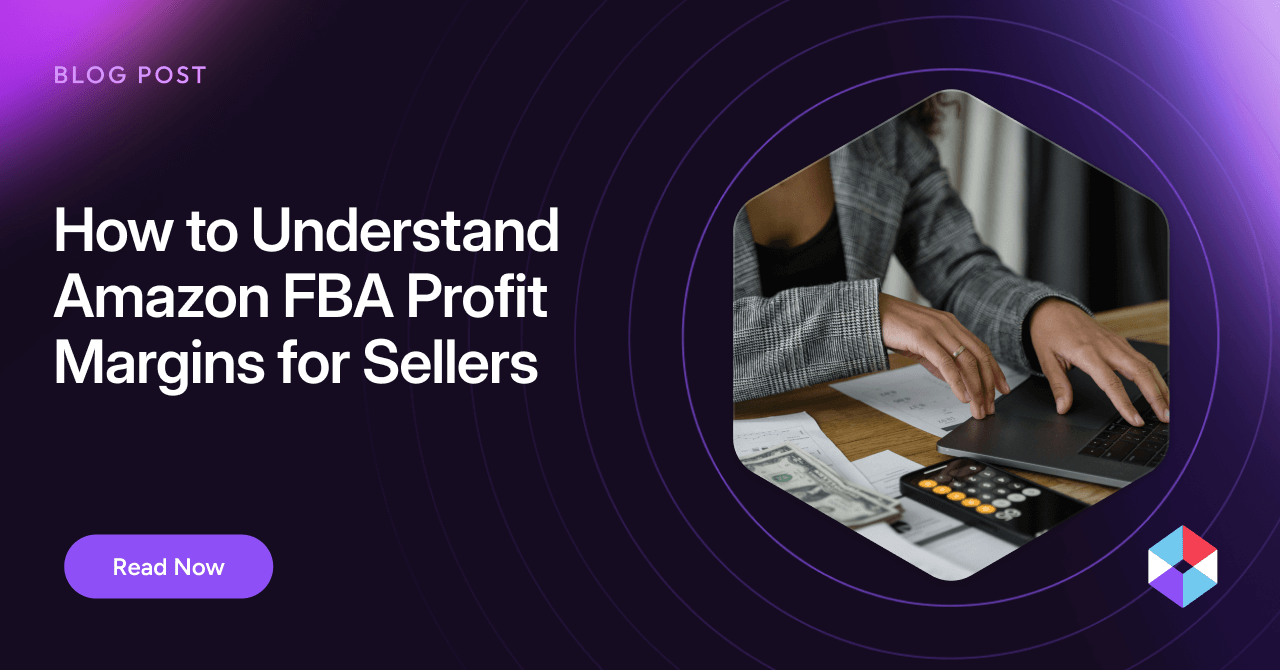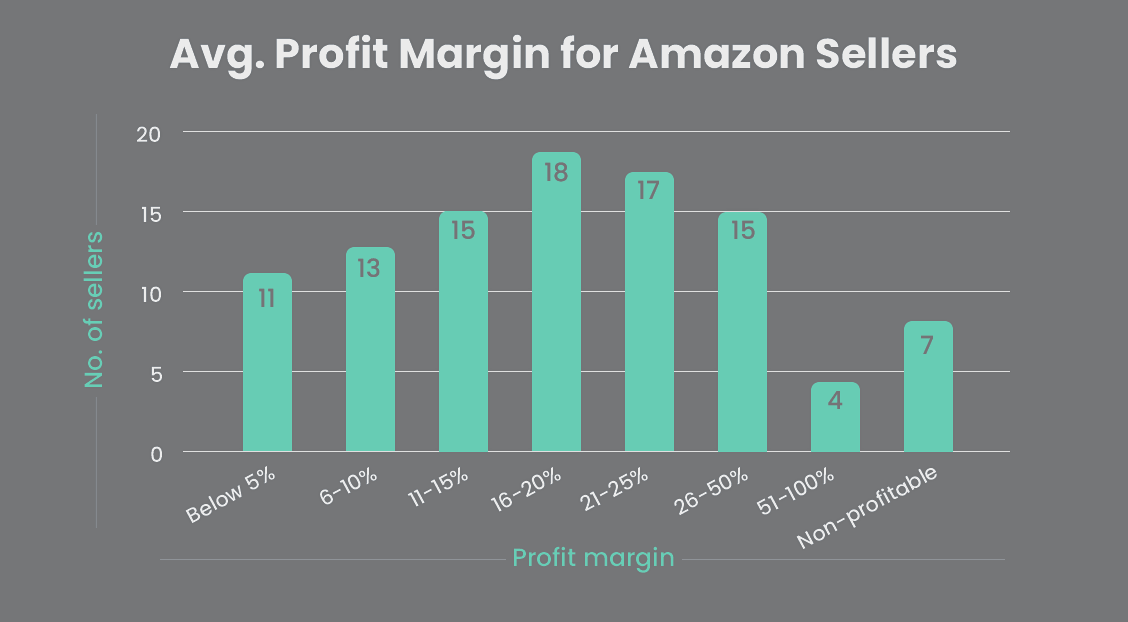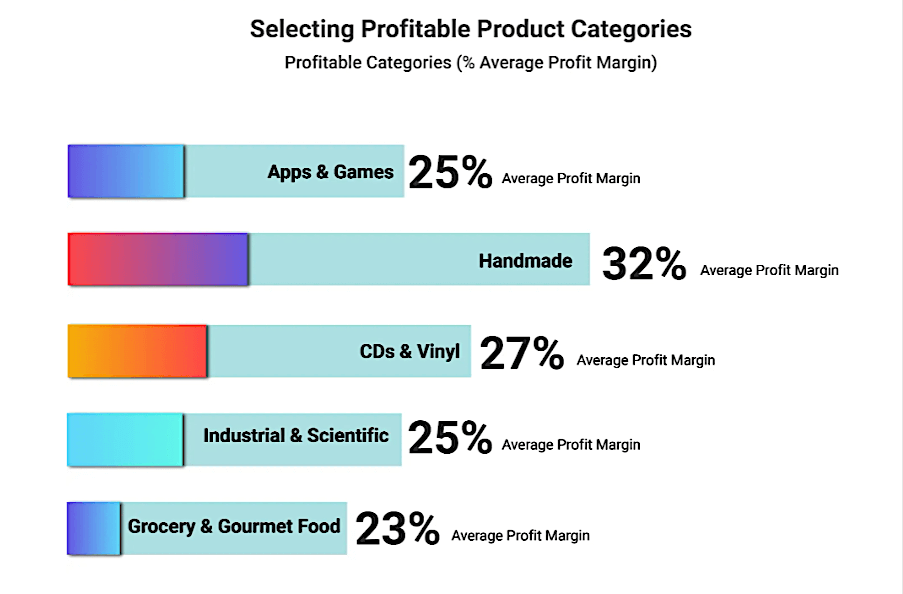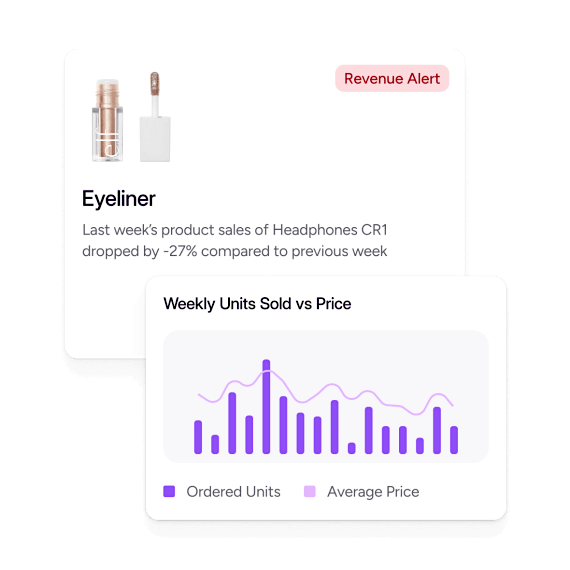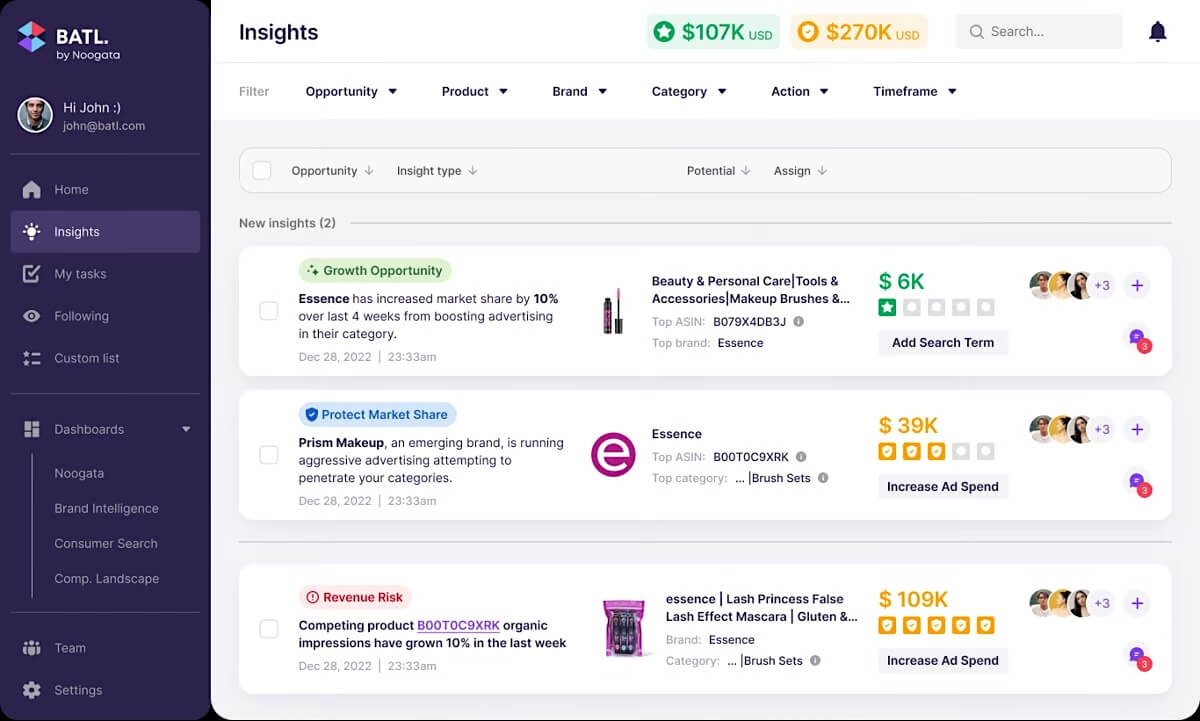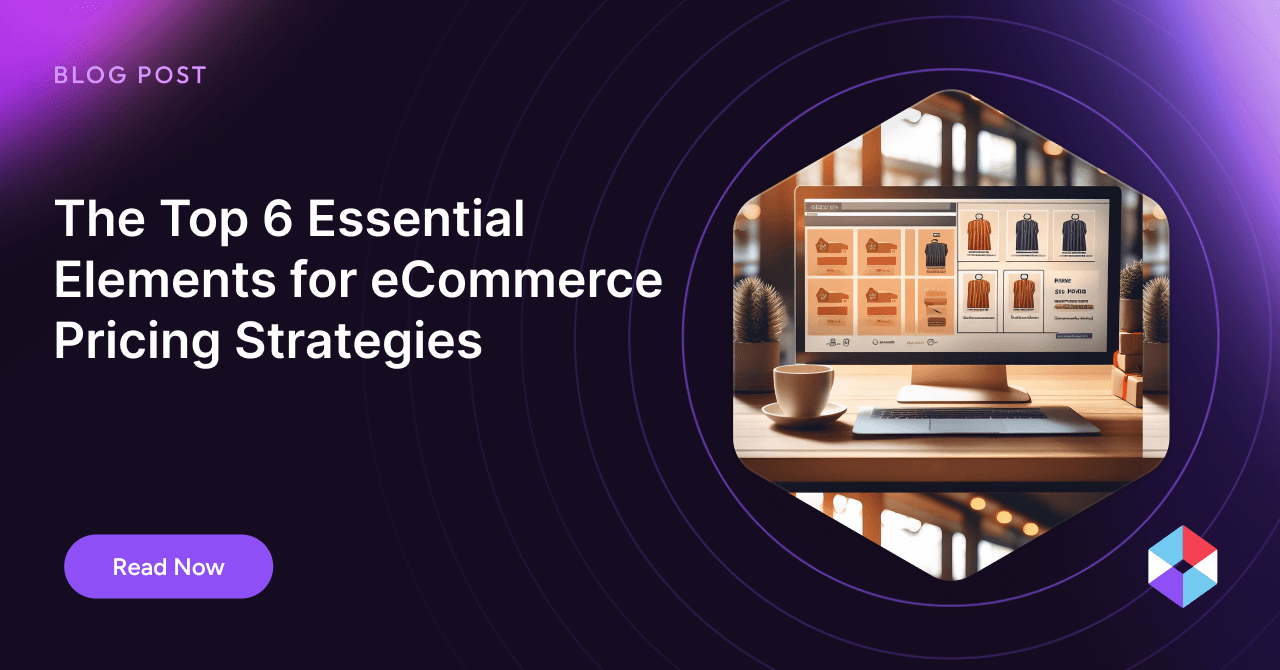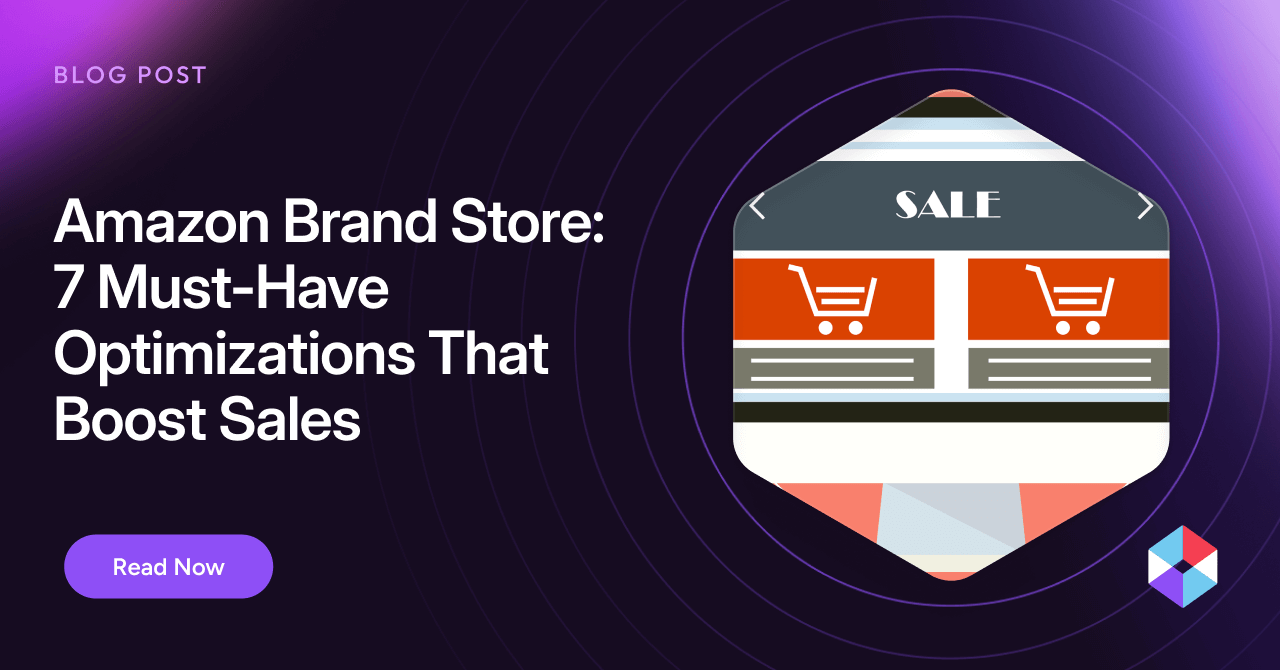There are many ways to measure the health of a business, but nothing tells a success story like a substantial profit margin. Understanding and optimizing profit margins is essential for high-volume Amazon FBA sellers because labor, marketing, and overhead can pad the costs of every individual sale.
Moving to the FBA model can increase the average seller’s sales volume by 20 to 25%. Tracking your profit margins, examining your fees and other costs, and making adjustments to your pricing and marketing strategies can help you hold on to as much of that additional revenue as possible.
Understanding your Amazon FBA profit margins is critical for sellers, and we’re going to share seven actionable strategies you can employ to improve them. But first, let’s figure out what actually counts as a “good” profit margin.
Amazon FBA Profit Margins: What’s considered good?
In the context of Amazon FBA, profit margin is the percentage of profit made on a sale after accounting for all the expenses involved. It’s a key metric to understand how efficiently your business is running, and is critical in proper merchandise financial planning.
While high profit margins are always a good thing, some markets have tighter margins than others. Many factors determine the minimally acceptable margins for any given business, but 5 to 20% is widely considered to be the typical range for Amazon FBA sellers.
There’s a difference between profit margin and return on investment (ROI), which is calculated by dividing the profits generated by a particular expenditure by its costs. ROI is an important metric for determining how well marketing campaigns and other business initiatives are performing. However, it doesn’t factor in indirect costs, and is most accurate once the initiative has run its course. In contrast, Amazon FBA profit margins can be tracked on a continual basis and will quickly reflect changes in pricing or sales strategy.
Faced with inflation, increased competition, and FBA fees, some sellers wonder if it’s still worth trying to sell with Amazon FBA in 2024. With third-party sales continuing to make up a large share of Amazon’s total sales, the potential for growth and high profits is still very much there—especially if you have the tools and resources to optimize your Amazon FBA profit margins.
How do you calculate Amazon FBA profit margins?
When discussing Amazon FBA profitability, we’ll primarily focus on net profit margin. This metric provides a more comprehensive picture of your business’s overall health by considering all expenses, both directly tied to the product and those incurred for running the business itself.
Net profit margin is calculated by subtracting total expenses, including both direct and indirect costs, from your total revenue. Then, divide this figure by your total revenue and multiply by 100 to express it as a percentage.
Here’s the formula:
Net Profit Margin = (Revenue – Expenses) / Revenue
For a more granular view of a product’s potential profitability based solely on the product itself, you can calculate the gross profit margin. This metric considers only the direct cost of the goods sold (COGS) in relation to the revenue. While it can be a helpful initial indicator, it doesn’t account for the broader expenses of running your business.
Gross Profit Margin = (Revenue – COGS) / Revenue
For example, imagine you have an FBA product that generates $3,000 in revenue. However, you have $900 in direct expenses (COGS) and an additional $1,500 for indirect costs like wages, overhead, and business support services. The gross profit margin would be 70% based on the direct product costs. However, the net profit margin, considering all expenses, would be a more realistic 20%.
What is the FBA Revenue Calculator, and how do you use it?
Amazon’s FBA Revenue Calculator is a free tool you can find in Seller Central. It lets registered sellers enter product information (either by selecting an existing product listing on Amazon, or by manually entering details like package dimensions) and a price, then provides:
- A breakdown of the FBA fees you’d be charged.
- Your cost per unit.
- Your net profit margin.
You can also enter your estimated self-fulfillment costs for comparison.
The FBA Revenue Calculator is a handy resource when you’re looking for ways to optimize your profits, allowing you to quickly estimate net profit margins for products you’re already selling on Amazon, other Amazon products you’re thinking of adding to your catalog, and even products that don’t exist yet.
What fees does Amazon take from your profits?
Although many sellers will find that Amazon FBA is a better deal for them than shipping products themselves, the service come with many fees, including:
- Referral fees are determined based on a percentage of the sales price. Referral rates vary by product category.
- Closing fees (fixed and variable) are per-unit fees charged for certain product categories.
- Fulfillment fees are per-unit fees based on the product category, package dimensions, and weight. They can include add-on charges for special packaging options.
- Monthly inventory storage fees are calculated based on the volume, in cubic feet, of the inventory Amazon is storing for you.
- Inbound placement service fees cover the costs associated with moving inventory to different service centers for faster delivery. Fees vary based on the options selected in your shipping plan.
Understanding the different ways these fees are calculated may help you find ways to reduce some of them and increase your Amazon FBA profit margins.
7 Strategies to Increase Your Amazon FBA Profit Margins
1. Careful Inventory Management
Careful inventory management can keep your sales figures high and avoid unnecessary costs. Buying new inventory on time to avoid running out of stock will prevent missed sales and keep you from losing momentum within the Amazon algorithm, which rewards higher sales with increased product visibility.
Paying storage fees on unsold products sitting in Amazon’s fulfillment centers is an expensive problem, too. Promotions and discounts can help generate sales for your less-popular items, but sometimes, it may be a better financial decision to return or liquidate a product that isn’t moving. This level of inventory management should also be part of your business’s overall sustainability strategy.
2. Cost-Reduction Initiatives
Take a close look at the FBA fees you’re paying, your purchasing costs, packaging, staffing, overhead, and anything else that might be taking a bite out of your profit margins. Any costs that can’t be justified by the benefits they provide should be on the table as a possible cut.
You can use the FBA Revenue Calculator to drill down on your fees and the variables that affect them. If you aren’t getting the best wholesale prices, think about buying in larger quantities or changing suppliers.
3. Strategic Pricing Optimization
Prices are known to fluctuate in some product categories, and Amazon shoppers are always searching for the best deal. The sale often goes to the seller with the lowest price, but aggressive price-slashing is one of the fastest ways to lose a good profit margin.
Instead, consider employing dynamic pricing, a strategic approach that has you monitoring competitor prices frequently and making only necessary adjustments within predetermined limits.
4. Targeted Advertising
Faced with low profit margins, you might be inclined to cut back on marketing and advertising expenses. A better approach is to invest in a smarter pay-per-click advertising strategy to generate more demand for your products.
Doing deeper keyword research will reveal not only the top search terms associated with your product, but also irrelevant keywords to avoid and underutilized ones that could deliver a high return on a comparatively cheap ad spend.
5. Deep Market Research
If you want to hit the optimal profit margins for your products, you’ve got to get to know your market really well. Researching purchasing trends, consumer attitudes and behavior, industry developments, and competing sellers will inform your pricing strategy and help you choose profitable, in-demand products to stock.
One of the most efficient ways to perform market research is to use AI-powered tools like Noogata that can continually gather and analyze data on your competitors, delivering insights into pricing, product selection, and marketing tactics.
6. Optimize Product Listings
The quality of your product listings can have a significant impact on your conversion rates. Make sure your listings have carefully crafted titles, high-resolution images, detailed and readable product descriptions, key features in bullet points, and the most relevant keywords.
You can also use Amazon’s A+ Content tool to add videos, comparison charts, and other engaging features. Positive customer reviews will help, too—so ensure that your customer service is top-notch.
7. Expand Your Portfolio
One great advantage of Amazon FBA is that it allows you to expand your product selection without having to make permanent investments in additional warehouse space.
Whether your assortment plan is tightly curated or broad and varied, a data-driven assortment strategy can help you choose high-margin products that will appeal to your target customers. Tools like Noogata’s Assortment Intelligence can streamline this process by leveraging AI analytics to generate accurate product recommendations and market insights.
Don’t Let Amazon FBA Profitability Get Lost in the Margins
Amazon is still a lucrative platform for independent sellers, and FBA has lowered some of the most challenging barriers to entry. To mitigate the higher costs of FBA, it’s necessary to continually monitor and optimize your profit margins. In a fast-moving and highly competitive marketplace like Amazon, it can be challenging to keep your margins high without raising prices and losing sales.
The best Amazon FBA profit margin optimization strategies greatly benefit from Noogata’s AI-powered, automated eCommerce growth platform. Its competitive intelligence, actionable insights, and trendspotting features can identify the right products at the right price points to hit your sales goals as profitably as possible.
Schedule a free demo to learn more about how Noogata’s AI-driven insights can transform your business into an FBA success story.
